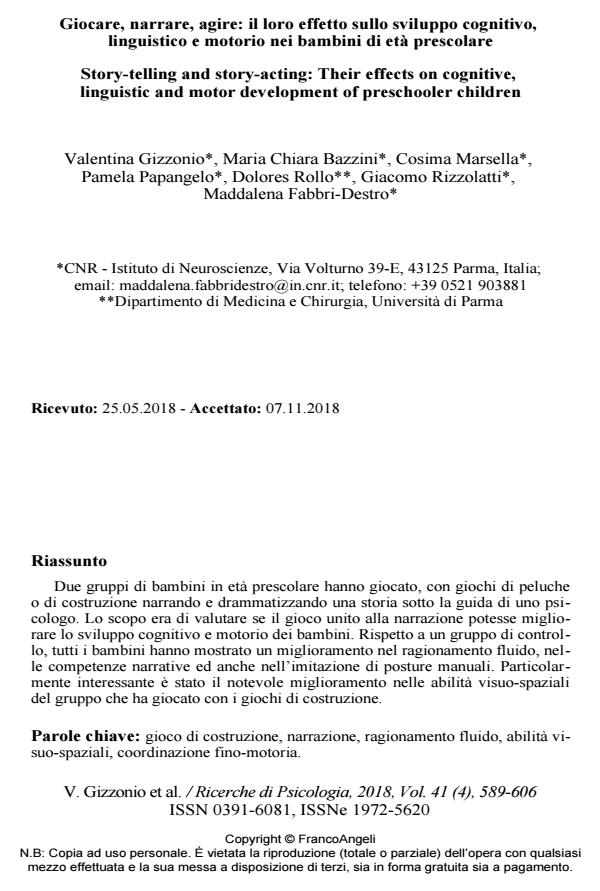Story-telling and story-acting: Their effects on cognitive, linguistic and motor development of preschooler children
Journal title RICERCHE DI PSICOLOGIA
Author/s Valentina Gizzonio, Maria Chiara Bazzini, Cosima Marsella, Pamela Papangelo, Dolores Rollo, Giacomo Rizzolatti, Maddalena Fabbri-Destro
Publishing Year 2019 Issue 2018/4
Language Italian Pages 18 P. 589-606 File size 281 KB
DOI 10.3280/RIP2018-004003
DOI is like a bar code for intellectual property: to have more infomation
click here
Below, you can see the article first page
If you want to buy this article in PDF format, you can do it, following the instructions to buy download credits

FrancoAngeli is member of Publishers International Linking Association, Inc (PILA), a not-for-profit association which run the CrossRef service enabling links to and from online scholarly content.
Two groups of preschooler children played with plush toys or construction toys telling and acting stories under the guidance of a psychologist. The aim of the study was to evaluate if the relation between story-telling and -acting im-proved cognitive and motor development of preschooler children respect to a control group. Both experimental groups, regardless the type of toy, improved their non-verbal fluid reasoning competence, narrative abilities and, surprisingly, also imitating hand positions skills. Most interestingly, children who played with construction toy have marked improvement in their visuospatial abilities.
Keywords: Construction play, story-telling, fluid reasoning, visuo-spatial abili-ties, fine-motor coordination.
- Il gioco con le costruzioni e lo sviluppo cognitivo: una review narrativa Concetta Pirrone, Sabrina Castellano, Concetta Giuseppa Amata, Christopher Tienken, in RICERCHE DI PSICOLOGIA 3/2021 pp.1
DOI: 10.3280/rip2021oa12859
Valentina Gizzonio, Maria Chiara Bazzini, Cosima Marsella, Pamela Papangelo, Dolores Rollo, Giacomo Rizzolatti, Maddalena Fabbri-Destro, Giocare, narrare, agire: il loro effetto sullo sviluppo cognitivo, linguistico e motorio nei bambini di età prescolare in "RICERCHE DI PSICOLOGIA " 4/2018, pp 589-606, DOI: 10.3280/RIP2018-004003